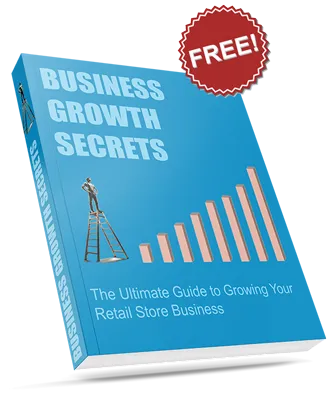Smart Operational Strategies for Brick-and-Mortar Businesses
Cutting Costs
Without Cutting Corners
Discover essential strategies to find and cut unnecessary costs.
Cost Management Without Compromise
In today’s volatile economic landscape, managing operational costs is not just about making cuts — it’s about making smarter choices. For brick-and-mortar businesses, the pressure to stay competitive while optimizing expenses is real. Whether you’re running a bakery, a retail store, or a service-based operation, unchecked operational costs can slowly eat away at profitability and stunt growth. However, with the right approach, cost reduction can serve as a catalyst for innovation, efficiency, and sustainable growth.
The key to success lies in adopting strategies that reduce unnecessary expenses without compromising quality or the customer experience. Following are some effective, forward-thinking methods that can help streamline your operations and improve your bottom line.
Understanding Operational Efficiency: Small Tweaks, Big Gains

Achieving operational efficiency is about refining existing processes rather than overhauling everything. Often, businesses overlook minor inefficiencies that, when addressed, can yield significant cost savings. Take the example of a bakery. Rather than cutting down production across the board, a savvy owner uses historical sales data to predict demand, adjusting the baking schedule accordingly. This simple shift can reduce waste by as much as 30%, enhance profit margins, and free up resources to explore new revenue-generating ideas.
Leverage Technology
For another example, a small bookstore noticed that their employees were spending a significant amount of time manually tracking inventory, which led to frequent stockouts and overstocking of certain titles. Instead of completely overhauling their entire inventory system, the owner decided to implement a simple digital inventory management tool. This allowed staff to quickly update stock levels in real-time, reducing the time spent on manual checks and preventing inventory discrepancies. As a result, the bookstore saw a reduction in excess stock by 20% and cut down on time spent managing inventory by 40%. These small adjustments helped streamline operations, reduced wasted resources, and freed up staff time to focus on customer service, ultimately improving both profitability and customer satisfaction.
Calculate the Payback Period of an Investment
At a two-story restaurant, staff had been hauling dishes upstairs and carting dirty plates back down for years—a routine that was as exhausting as it was inefficient. Realizing the hidden cost of this daily grind, the owner conducted a cost-benefit analysis on installing a small freight elevator, or “dumbwaiter.” While the initial investment wasn’t cheap ($150,000), the math told a compelling story: the system could effectively replace the workload of about 1.5 employees ($89,000 per year), reduce kitchen congestion, and speed up meal delivery — potentially boosting customer lifetime value (CLV) through better service. The analysis showed the elevator would pay for itself in about 1.7 years or just over 20 months. After that, it would continue to deliver savings and streamline operations. By making this strategic investment, the restaurant turned a long-standing inefficiency into a long-term advantage.
Payback Period Calculator
These examples show how addressing small, overlooked inefficiencies—like manual inventory tracking or time-consuming food delivery processes—can lead to significant operational improvements. By making targeted, strategic upgrades, businesses can boost productivity, reduce labor costs, and enhance the customer experience.
Innovative Techniques to Trim the Fat
There are several proven strategies to help businesses cut costs while maintaining, or even improving, service quality. Let’s explore a few:
1. Harness the Power of Technology and Automation
Technology isn’t just for tech companies. Small businesses should leverage digital tools to streamline operations, like modern point-of-sale (POS) systems, best-in-class accounting software, and inventory management software to reduce manual labor, and cut down on human error. Also consider:
- Smart thermostats and LED lighting to reduce utility costs.
Read more...
- Predictive analytics software to forecast inventory needs or optimal staffing levels can reduce overstocking and understaffing, saving on both products and labor.
- Self-service kiosks and AI chatbots: these can lower labor costs while improving customer experience.
2. Evaluate Capital Expenditures (CAPEX) vs. Operating Expenditures (OPEX)
Many cost-saving strategies require an upfront investment for equipment or some improvement known as capital expenditures (CAPEX) with costs that may seem daunting. However, some of these investments can pay off long-term by reducing ongoing operating costs (OPEX). To determine when a capital expenditure will pay
Read more...
Consider a furniture store that invests in a 3D printer to produce custom parts. While the initial cost may be high, the printer eliminates the need for outsourcing, slashes labor costs, and increases production capacity, making the investment worthwhile. Over time, this CAPEX expenditure will pay for itself, while OPEX costs, like labor, continue to accumulate with no end in sight.
3. Create a Cost-Conscious Culture
Creating a cost-efficient business isn’t just about top-down strategies—it’s about fostering a culture where everyone is mindful of the bottom line. Engage your team by sharing key performance metrics, celebrating cost-saving initiatives, and encouraging employee-driven suggestions for process improvements. When your staff sees the direct impact of their decisions on company profitability, they’re more likely to contribute ideas that can lead to cost savings.
Practical Cost-Cutting Ideas for Every Industry
.
.
Retail Stores
- Smart Shelving and Digital Price Tags: Automate inventory and pricing updates to reduce labor costs and improve accuracy.
- Cross-Training Employees: Having employees capable of performing multiple roles not only reduces labor gaps but enhances customer satisfaction and loyalty.
- Bulk Purchasing: Negotiate better deals with suppliers or even purchase jointly with nearby stores to reduce per-unit costs.
Restaurants and Cafés
- Seasonal Menus: Design menus around locally sourced, seasonal ingredients to reduce waste and enhance the customer experience.
- Digital Ordering: A mobile app or digital kiosk can reduce wait times, increase order accuracy, and create opportunities for upselling.
- Energy Efficiency: Invest in energy-efficient kitchen equipment, smart thermostats, and LED lighting to reduce long-term operating costs.
.
.
Healthcare Facilities
- Telemedicine and Virtual Consultations: Reduce the need for in-person visits, saving on physical space, utilities, and administrative costs.
- AI for Diagnostics: Implement AI tools to assist with diagnoses and optimize staff resources, reducing the likelihood of misdiagnoses and readmissions.
- Energy‑Saving Upgrades: From LED lighting to energy-efficient HVAC systems, small improvements can lead to substantial savings.
Service-Based Businesses
- Subscription Models: For businesses like pet grooming or personal training, subscription models can create consistent cash flow, optimize scheduling, and reduce customer churn.
- Remote Work: For administrative tasks, consider remote work options to reduce the need for physical office space, saving on rent, utilities, and office supplies.
Collaborate to Innovate
Cutting costs doesn’t always have to be done in isolation. Collaborative partnerships with other local businesses can open new avenues for savings. Consider bartering services with complementary businesses, sharing equipment, or pooling resources for joint promotions. For example, a local gym might partner with a nutritionist and a massage therapist to offer bundled services at a discounted rate, reducing overhead and increasing customer value. Collaboration has been proven to increase business for all participants because the collective addressable market footprint is bigger.
Collaboration has been proven to increase business for all participants because the collective addressable market footprint is bigger. Need proof?
Consider the enclosed walkways between casinos in Las Vegas.  If you’ve been there, have you noticed that the “strip” or main tourist attraction has been engineered with air conditioned walkways between different casino properties? Several Las Vegas casinos are connected by walkways allowing for easy movement between properties, especially during the summer months. Some notable examples include walkways between Mandalay Bay, Luxor, and Excalibur, as well as between the Bellagio and Bally’s. In many areas, getting from one casino to another cannot be easily accomplished by going outside. This is by design! Casino owners learned long ago that if each casino is isolated from all others, making people walk outside one casino to walk into another, the result is fewer customers for each property. This is because of “access friction” or the increased difficulty of getting from one casino to another unless they are connected. Many people would leave one casino and, noticing how hot and/or difficult it would be to go to another, would just go back to their room and stop gambling. By partnering together to create air conditioned walkways between casinos, more people keep gambling and spending money, making the customer “footprint” larger for all the businesses.
If you’ve been there, have you noticed that the “strip” or main tourist attraction has been engineered with air conditioned walkways between different casino properties? Several Las Vegas casinos are connected by walkways allowing for easy movement between properties, especially during the summer months. Some notable examples include walkways between Mandalay Bay, Luxor, and Excalibur, as well as between the Bellagio and Bally’s. In many areas, getting from one casino to another cannot be easily accomplished by going outside. This is by design! Casino owners learned long ago that if each casino is isolated from all others, making people walk outside one casino to walk into another, the result is fewer customers for each property. This is because of “access friction” or the increased difficulty of getting from one casino to another unless they are connected. Many people would leave one casino and, noticing how hot and/or difficult it would be to go to another, would just go back to their room and stop gambling. By partnering together to create air conditioned walkways between casinos, more people keep gambling and spending money, making the customer “footprint” larger for all the businesses.
So look around your area and notice any other business that might make sense to partner with to serve their customers while you advertise your customers to them.
Get creative!
Call To Action
Reducing operational costs is a continuous, dynamic process. As the landscape of your industry shifts, so should your cost-cutting strategies. Start by evaluating your current operational structure. Identify areas where inefficiencies can be eliminated—whether through technology, smarter use of resources, or renegotiating supplier contracts. Engage your team and make them a part of the solution.
By applying the right mix of smart investments, strategic cost-saving measures, and fostering a culture of efficiency, your business will not only survive but thrive in today’s competitive market. Focus on doing better with what you have, and you’ll see significant improvements in both your bottom line and your ability to scale sustainably.
Unlock the Secrets to Cash Flow Success



